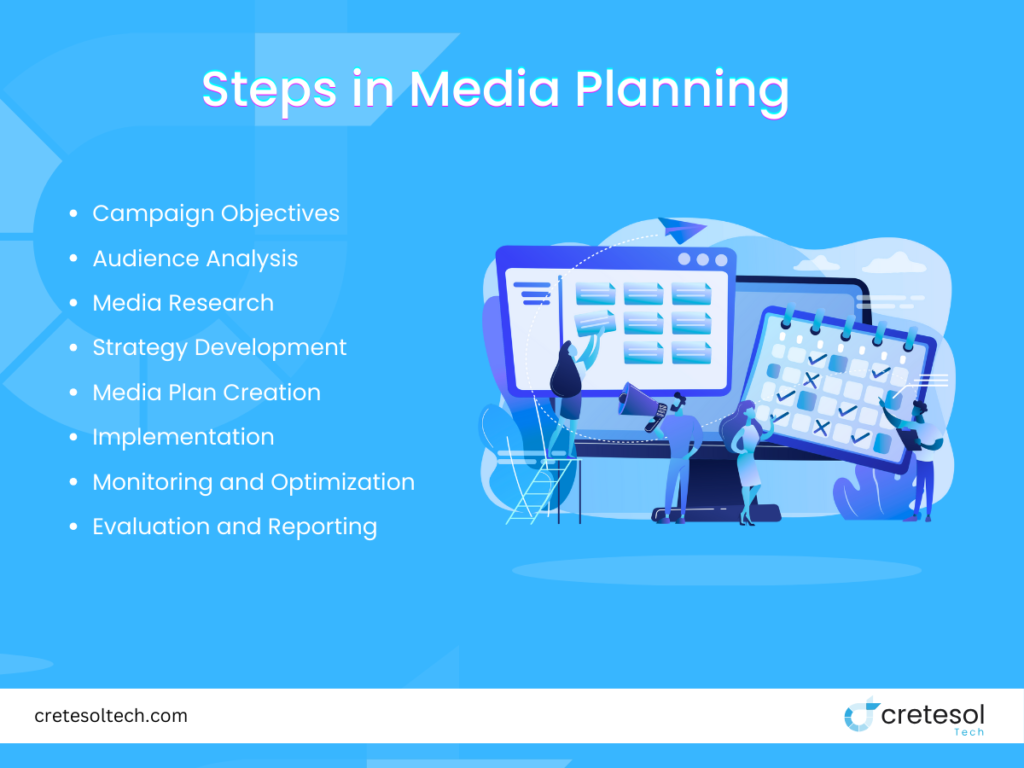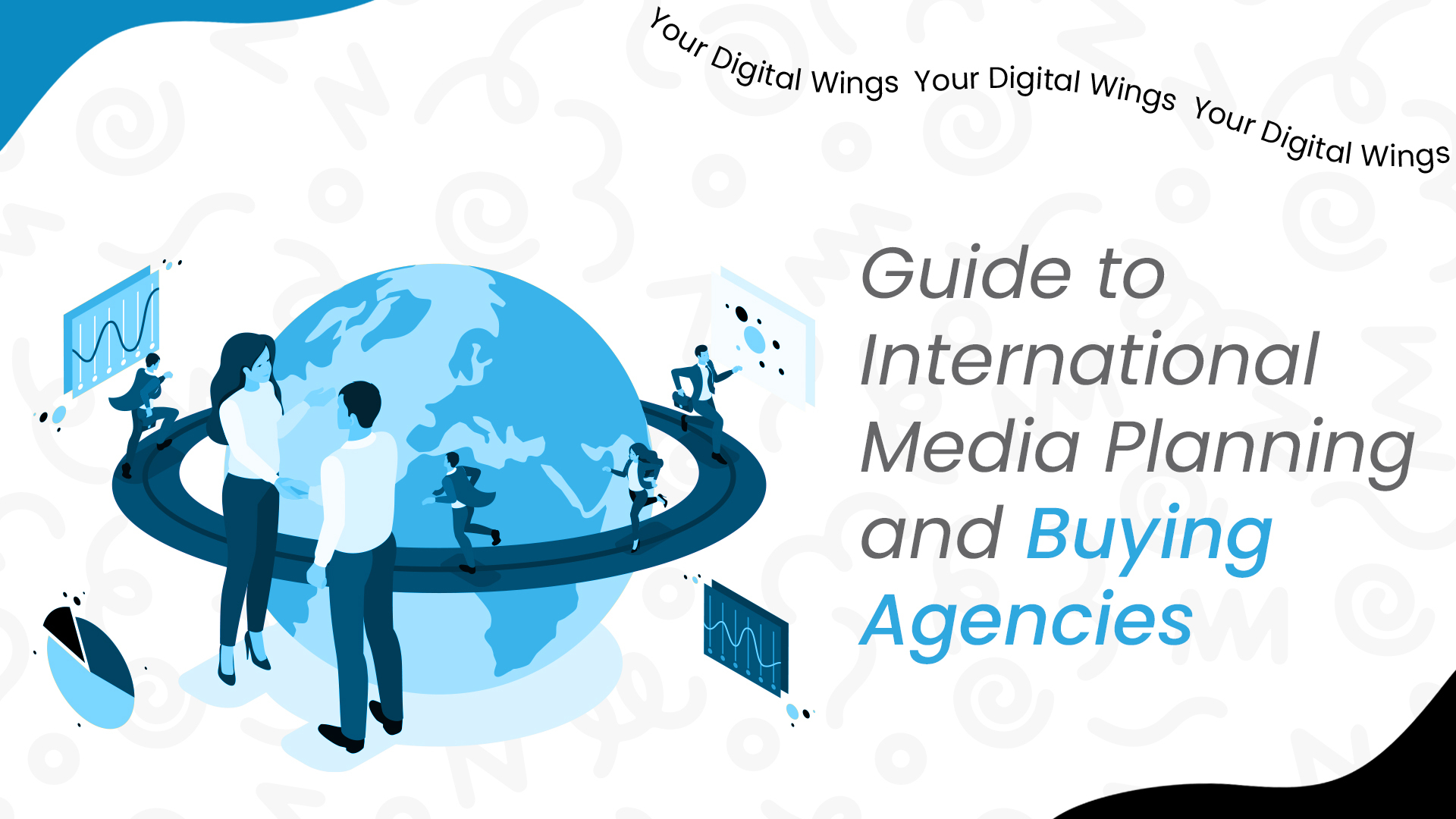In today’s globalized economy, reaching audiences across different regions requires a strategic approach to media planning and buying. International media planning and buying involve selecting the right media channels, negotiating media prices, and ensuring the delivery of advertising messages to targeted audiences worldwide. This process is crucial for brands aiming to expand their reach and impact in multiple markets.
Key Elements of International Media Planning and Buying
In the realm of global advertising, effective international media planning and buying are essential to reaching diverse audiences and achieving marketing objectives. This involves a series of strategic steps that ensure the right messages are delivered through the right channels, maximizing the impact and return on investment.
Key elements include thorough market research, precise target audience identification, careful media channel selection, efficient budget allocation, skillful negotiation and buying, diligent campaign execution and monitoring, and comprehensive reporting and analysis. Each of these components plays a crucial role in the success of international media campaigns, helping brands navigate the complexities of different markets Adapting messaging for different markets, and connecting with audiences worldwide.
- Market Research and Analysis
Conducting thorough research is the foundation of any successful international media campaign. This involves understanding the media landscape in each target market, which includes studying consumer behavior, media consumption habits, and competitive analysis. By gaining insights into how consumers in different regions engage with media, brands can tailor their strategies to resonate more effectively with local audiences. This step is crucial for identifying opportunities and challenges unique to each market.
- Target Audience Identification
Defining the target audience is another critical step in media planning. This process involves segmenting the audience based on demographics, psychographics, and buying behaviors specific to each region. Understanding cultural nuances and preferences is essential for crafting messages that are not only relevant but also compelling. By accurately identifying the target audience, brands can ensure their advertising efforts are focused and effective, leading to better engagement and conversion rates.
- Media Channel Selection
Selecting the most appropriate media channels for each market is vital for reaching the target audience effectively. This could include a mix of traditional media such as TV, radio, and print, as well as digital platforms like social media, search engines, and websites. The choice of media channels should be guided by the consumption habits of the target audience in each region. By strategically choosing the right mix of media, brands can maximize their reach and impact.
- Budget Allocation
Efficient budget allocation is key to maximizing the return on investment (ROI) from media campaigns. This involves distributing the advertising budget across different markets and media channels based on cost analysis and expected performance. The goal is to optimize the budget in a way that achieves the highest possible ROI while ensuring adequate coverage and impact in each target market. This step requires a deep understanding of the cost-effectiveness of various media options and the potential reach they offer.
- Negotiation and Buying
Negotiating with media owners to secure the best rates and placements is a crucial aspect of media buying. This includes bulk buying, seasonal deals, and long-term contracts to obtain favorable terms. Effective negotiation can significantly reduce advertising costs and improve the efficiency of media spend. Building strong relationships with media vendors and leveraging buying power can lead to better deals and more strategic placements.
- Campaign Execution and Monitoring
Once the media plan is in place, executing the campaign and continuously monitoring its performance is essential. This involves placing ads according to the plan and tracking key metrics such as reach, engagement, and conversions. Continuous monitoring allows for real-time adjustments to optimize the campaign’s effectiveness. By analyzing performance data, brands can make informed decisions to enhance the impact of their media efforts.
- Reporting and Analysis
Generating comprehensive reports to assess the effectiveness of media campaigns is the final step in the planning and buying process. This includes evaluating key performance indicators (KPIs), measuring ROI, and providing actionable insights for future campaigns. Detailed analysis helps in understanding what worked well and what didn’t, allowing for continuous improvement in media strategies. Effective reporting ensures that brands can learn from each campaign and apply those lessons to achieve better results in subsequent efforts.
International Media Planning and Buying Agency Infrastructure
To execute a successful international media campaign, agencies must have a robust infrastructure and International Marketing Strategies. Here are the key components of an efficient International media planning and buying agency:
Expertise and Talent
A team of experienced media planners, buyers, and analysts is essential for any successful International media planning and buying agency. These professionals bring a deep understanding of global markets, media landscapes, and consumer behavior. Their expertise allows for the development of effective strategies tailored to different regions. Additionally, having local experts in key markets can provide valuable insights into regional nuances and facilitate better negotiations with local media vendors, enhancing the overall effectiveness of campaigns.
- Experienced Team: A dedicated team of media planners, buyers, and analysts with deep market knowledge.
- Global Understanding: Professionals who understand global markets, media landscapes, and consumer behavior.
- Local Insights: Local experts in key markets provide valuable insights and improve negotiation outcomes.
Technology and Tools
Advanced technology and tools are critical for efficient International media planning and buying. Agencies should leverage media planning software, data analytics platforms, and automated buying systems to enhance their capabilities. These tools enable data-driven decision-making, optimize media buys, and allow for real-time monitoring of campaigns. The use of sophisticated technology ensures that agencies can accurately track performance metrics, adjust strategies swiftly, and work for, and achieve better results for their clients in Multilingual marketing communication.
- Advanced Software: Utilization of media planning software for precise and efficient campaign management.
- Data Analytics: Platforms that offer comprehensive data analysis for informed decision-making.
- Automated Systems: Tools that automate buying processes and enable real-time campaign monitoring.
Global Network
A strong global network of media partners and vendors is crucial for an agency’s success. This network allows agencies to negotiate better rates, secure prime placements, and access exclusive deals. Building and maintaining relationships with media owners across different regions is vital for securing advantageous terms and ensuring the smooth execution of media campaigns. A well-established global network provides agencies with the flexibility and reach needed to implement effective international media strategies.
- Media Partnerships: Strong relationships with media partners and vendors across different regions.
- Negotiation Leverage: Ability to negotiate better rates and secure prime placements due to established networks.
- Exclusive Deals: Access to exclusive deals and opportunities through a broad global network.
Research and Insights
Continuous research and insights form the backbone of effective media planning. Agencies should invest in comprehensive market research, audience analysis, and media consumption studies. Keeping up with the latest trends and consumer preferences ensures that the media strategy remains relevant and impactful. By understanding the evolving media landscape and consumer behaviors, agencies can craft strategies that resonate with target audiences and deliver desired outcomes.
- Continuous Research: Ongoing investment in market research and audience analysis.
- Trend Monitoring: Keeping up with the latest trends and consumer preferences to stay relevant.
- Impactful Strategies: Developing media strategies based on in-depth insights and data.
Compliance and Legal Expertise
Navigating the legal and regulatory landscape of different markets is essential for international media campaigns. Agencies must ensure compliance with advertising regulations, data protection laws, and industry standards in each region they operate. Legal expertise helps in avoiding potential pitfalls and ensures the smooth execution of campaigns. Understanding and adhering to local laws and regulations protects the agency and its clients from legal issues and enhances the credibility and effectiveness of the campaigns.
- Regulatory Compliance: Ensuring adherence to advertising regulations and industry standards in different markets.
- Legal Expertise: Access to legal knowledge to navigate complex regulatory landscapes.
- Risk Mitigation: Protecting the agency and clients from legal issues through thorough compliance practices.
What is Media Planning?
Media planning is the process of strategizing and selecting the optimal media platforms to deliver advertising messages to the target audience. It involves a series of steps that ensure the effective dissemination of the campaign’s message while maximizing the return on investment. Here’s a breakdown of the media planning process:

Steps in Media Planning
- Campaign Objectives: Define clear objectives for the media campaign. This could include brand awareness, lead generation, sales conversion, or customer engagement.
- Audience Analysis: Identify and understand the target audience. This involves demographic, psychographic, and behavioral analysis to tailor the media strategy.
- Media Research: Conduct thorough research to identify the best media channels that align with the campaign objectives and target audience. This includes analyzing different media platforms’ reach, frequency, and effectiveness.
- Strategy Development: Develop a media strategy that outlines the mix of media channels, timing, and budget allocation. This strategy should align with the campaign goals and audience preferences.
- Media Plan Creation: Create a detailed media plan that includes the selected media channels, schedules, and budget distribution. This plan serves as a roadmap for the campaign execution.
- Implementation: Execute the media plan by placing ads on the chosen media channels. This involves coordinating with media vendors, creative teams, and other stakeholders.
- Monitoring and Optimization: Continuously monitor the performance of the media campaign. Analyze metrics such as reach, engagement, conversions, and ROI. Make necessary adjustments to optimize the campaign’s effectiveness.
- Evaluation and Reporting: Evaluate the overall performance of the media campaign. Generate reports that highlight key insights, successes, and areas for improvement. Use this data to inform future media planning efforts.
Importance of Media Planning
Effective media planning and Communication strategies for international markets ensure that the advertising message reaches the right audience at the right time through the right channels. It maximizes the impact of advertising spending and helps achieve the campaign’s objectives. By carefully selecting and optimizing media channels, brands can enhance their visibility, engage their audience, and drive desired outcomes.
Here is a table highlighting the importance of media planning:
| Aspect | Description |
| Maximized Reach | Ensures that the advertising message reaches the right audience at the right time through appropriate media channels. |
| Cost Efficiency | Helps in optimizing the budget by selecting the most cost-effective media options and avoiding unnecessary expenditures. |
| Targeted Advertising | Allows for precise targeting of specific demographics, psychographics, and geographical areas to increase the relevance and impact of the advertising. |
| Consistent Messaging | Ensures that the brand message remains consistent across various media platforms, strengthening brand identity and recall. |
| Performance Monitoring | Enables continuous tracking and assessment of campaign performance, allowing for real-time adjustments and improvements. |
| Strategic Allocation | Facilitates strategic distribution of the advertising budget across different channels and markets to achieve the best return on investment (ROI). |
| Informed Decision-Making | Utilizes data and research to make informed decisions about media placements and strategies, reducing the risk of campaign failure. |
| Competitive Advantage | Provides insights into competitors’ media strategies and helps in developing more effective and unique media plans. |
| Resource Optimization | Ensures optimal use of resources by allocating them to the most effective media channels and avoiding wastage. |
| Long-Term Planning | Supports the development of long-term media strategies that align with overall marketing goals and objectives. |
Conclusion
International media planning and buying is a complex yet crucial process for brands aiming to expand their global footprint. A well-structured agency infrastructure, combined with a thorough understanding of media planning principles, ensures the successful execution of international media campaigns. Cretesol Tech can help them by leveraging expertise, technology, and insights, Cretesol Tech helps brands navigate the intricacies of global markets and achieve their marketing goals.
FAQs
What is an International media planning and buying agency?
An International media planning and buying agency strategizes and purchases advertising space and time for clients. They conduct market research to select the best media channels. The agency aims to maximize campaign impact and ROI through data-driven decisions and industry expertise.
What are the basics of International media planning and buying?
Market Research: Analyzing media consumption and audience preferences.
Media Selection: Choosing effective channels and platforms.
Budget Allocation: Efficiently distributing the advertising budget.
Is a media planner a good career?
Yes, it offers a dynamic, creative, and analytical work environment. Media planners shape advertising strategies and ensure messages reach the right audience. The role offers strong career prospects and growth opportunities in a continually evolving field.
What are the roles of the media planner and the media buyer?
Media Planner:
Research: Understands audience behavior and media habits.
Strategy: Develop media plans aligning with marketing goals.
Selection: Recommends optimal media channels.
Media Buyer:
Negotiation: Secures the best rates and placements.
Implementation: Purchases media spots and ensures delivery.
Monitoring: Tracks performance and optimizes the campaign.

 United Arab Emirates
United Arab Emirates